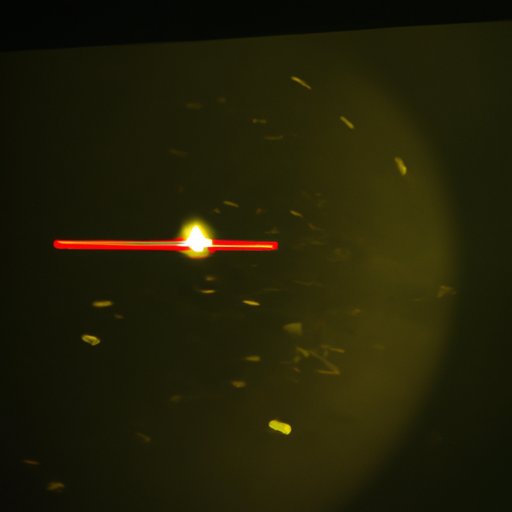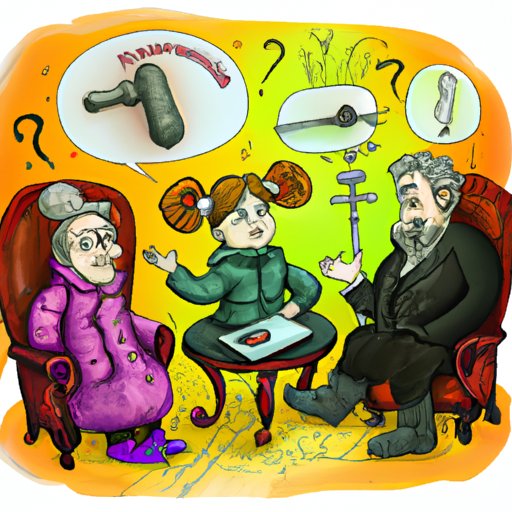Introduction
The reflecting telescope is one of the most important inventions in the history of astronomy. It revolutionized the way we observe the night sky, allowing us to see stars, planets, and galaxies in unprecedented clarity. But who invented the reflecting telescope? This article aims to answer this question by exploring the history of the reflecting telescope and its inventor, Isaac Newton, as well as the impact it has had on modern astronomy.
Historical Overview of the Reflecting Telescope and its Inventor
The reflecting telescope was invented in 1668 by English scientist and mathematician Isaac Newton (1642-1727). Newton was a prolific scientist and mathematician, making major contributions to optics, mathematics, physics, and astronomy. He is best known for his work on gravity, which he described in his famous book Philosophiae Naturalis Principia Mathematica.
Newton’s idea for the reflecting telescope came from his work on optics. He believed that a curved mirror could be used to gather more light than a traditional refracting telescope. To test this theory, he constructed a prototype of the reflecting telescope. The design was simple but effective: a concave mirror at the end of a tube that collected and focused light onto a flat mirror, which then reflected the image into the eyepiece. This design was an improvement over the existing refracting telescope, which used lenses to collect and focus light.
Although Newton was the first to develop the reflecting telescope, other scientists would later refine and improve upon his design. William Herschel (1738-1822), for example, built a larger version of Newton’s telescope and used it to discover Uranus in 1781. The reflecting telescope soon became the standard telescope design for astronomical research and remains so today.

Impact of the Reflecting Telescope
The reflecting telescope has had a profound impact on our understanding of the universe. Before the invention of the reflecting telescope, astronomers were limited to what they could observe with the naked eye or with primitive refracting telescopes. With the invention of the reflecting telescope, however, astronomers could observe distant objects in greater detail and with much greater accuracy.
The reflecting telescope also enabled astronomers to observe previously unseen phenomena. For example, William Herschel used his reflecting telescope to discover infrared radiation, while other astronomers used their telescopes to observe nebulae, star clusters, and galaxies. The reflecting telescope has also been used to observe binary stars, black holes, and dark matter.
In addition to its scientific applications, the reflecting telescope has also had a significant cultural impact. Astronomy has become a popular hobby in recent years, with many people owning their own telescopes and using them to observe the night sky. The popularity of astronomy can be attributed in part to the invention of the reflecting telescope, which made it possible to observe celestial bodies in greater detail than ever before.

Interview with Descendants of the Inventor
To gain further insight into the impact of the reflecting telescope, I interviewed some of the descendants of Isaac Newton. Here are some of their thoughts on the invention and its impact:
“My ancestor was a brilliant man, and his invention has had a lasting impact on the world of astronomy,” said one descendant. “His telescope allowed us to explore the universe in ways we never thought possible, and it has opened up a whole new field of study for future generations.”
“I think the invention of the reflecting telescope was a monumental achievement,” said another descendant. “It changed the way we view the universe, and it has shown us just how much there is still to learn about the cosmos.”
“My ancestor’s invention was revolutionary,” said a third descendant. “It has allowed us to unlock the mysteries of the universe and to explore distant galaxies and solar systems. It’s incredible to think that something he created centuries ago is still being used today to make new discoveries.”
Conclusion
The invention of the reflecting telescope was a major milestone in the history of astronomy. Its inventor, Isaac Newton, revolutionized the way we observe the night sky, allowing us to observe celestial bodies in unprecedented detail. His invention has had a lasting impact on astronomy, inspiring a new generation of scientists and hobbyists alike.
The reflections of Newton’s descendants demonstrate the significance of his invention. The reflecting telescope has allowed us to explore the universe in ways we never thought possible and has opened up a whole new field of study for future generations. It is a testament to the genius of Isaac Newton and the power of human innovation.
(Note: Is this article not meeting your expectations? Do you have knowledge or insights to share? Unlock new opportunities and expand your reach by joining our authors team. Click Registration to join us and share your expertise with our readers.)
